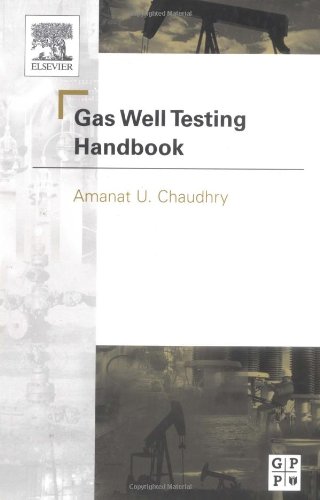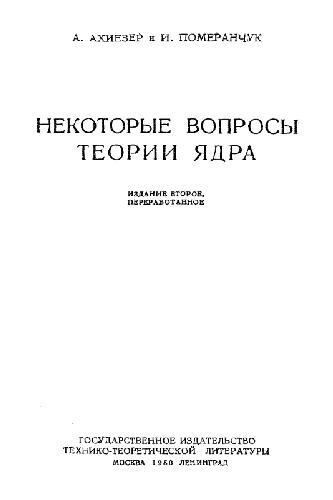Amanat Chaudhry9780080523729, 9780750677059, 0750677058
Table of contents :
Front Matter……Page 2
Dedication……Page 4
Foreword……Page 5
Preface……Page 7
Acknowledgments……Page 9
Table of Contents……Page 10
1.2 History of Gas Well Testing……Page 22
1.3 Gas Well Test Data Acquisition, Analysis, and Management……Page 23
1.4 Selecting Gas Wells for Optimum Stimulation Treatment……Page 24
1.5 Reservoir System Characterization Process……Page 25
1.8 Unit Systems and Conversions……Page 28
References and Additional Reading……Page 30
2.1 Introduction……Page 32
2.2 Steady-state Laminar Flow……Page 33
2.3 Steady-state Turbulence Flow……Page 39
2.4 Pseudo-steady-state (Finite) Flow……Page 42
2.6 Gas Radial Diffusivity Equation……Page 44
2.7 Basic Gas Flow Equations……Page 45
2.8 One-dimensional Coordinate Systems……Page 47
2.9 Radial Gas Flow Equations in Dimensionless Variables and Groups……Page 48
2.10 Analytical Solutions of Gas Flow Equations……Page 55
2.11 Application of Superposition Techniques……Page 70
2.12 Choice of Equation for Gas Flow Testing and Analysis……Page 83
2.13 Skin, IT Flow, and Wellbore Storage Effects……Page 85
2.14 Numerical Solutions of Partial Differential Equations……Page 92
2.15 Summary……Page 101
References and Additional Reading……Page 102
3.2 Steady-state Gas Flow……Page 105
3.3 Pressure Transient Characteristics in Horizontal Gas Wells……Page 109
3.4 Pseudo-steady-state Gas Flow……Page 114
3.5 Horizontal Transient Well Testing Techniques……Page 123
3.7 Horizontal Well Application in Tight Gas Reservoirs……Page 143
3.8 Influence of Turbulence in High-permeability Gas Wells……Page 145
3.10 Inflow Performance Responses in Vertical and Horizontal Gas Wells……Page 146
3.11 Estimating Reservoir Properties from Production Histories……Page 153
References and Additional Reading……Page 159
4.2 Gas Flow in Infinite-acting Reservoirs……Page 161
4.3 Stabilized Flow Equations……Page 162
4.4 Application of Transient Flow Equations……Page 163
4.5 Classifications, Limitations, and Use of Deliverability Tests……Page 168
4.6 Flow-rate, Pressure Behavior, and Deliverability Plots……Page 170
4.7 Gas Well Deliverability Testing and Production Potential Analysis……Page 174
4.8 Stabilized Deliverability Equation……Page 217
4.9 Stabilized Deliverability Relationship Using Graphical Method……Page 223
4.10 Estimation of Gas Well Deliverability from Short Flow Tests……Page 227
4.11 Predicting Gas Well Deliverability Using Type Curves……Page 240
4.12 Estimation of Skin Factors from Well Completion Data……Page 249
4.13 Laminar-inertial Turbulent Flow Analysis……Page 250
4.14 Summary……Page 255
References and Additional Reading……Page 256
5.2 Characteristics of Flow and Gas Well Transient Testing……Page 258
5.4 Characteristics of Various Flow Regimes……Page 259
5.6 Uses of Pressure Drawdown Tests……Page 265
5.7 Analysis of Early-time Flow Data……Page 266
5.8 Estimating Formation Characteristics from Transient Flow Test Data……Page 272
5.9 Analysis of Pseudo-steady-state Flow Data……Page 330
5.10 Application of Stabilized Deliverability Equation……Page 336
5.12 Summary……Page 337
References and Additional Reading……Page 338
6.2 Pressure Buildup Behavior Curves……Page 340
6.4 Type Curves and Desuperposition……Page 342
6.6 Tests Utilizing Middle-time and Late-time Data……Page 343
6.7 Pressure-time Behavior of Infinite-acting Reservoirs……Page 344
6.8 Finite Reservoir Behavior……Page 358
6.9 Average Reservoir Pressure Estimating Techniques……Page 361
6.10 Other Methods for Analyzing Pressure Buildup Test Data……Page 364
6.11 Pressure Behavior Analysis and Estimating Formation Characteristics……Page 374
6.12 Concept of Drainage Radius……Page 414
6.14 Summary……Page 416
References and Additional Reading……Page 417
7.2 Empirical Treatment……Page 419
7.3 Fractured Gas Well Deliverability Estimation Techniques……Page 427
References and Additional Reading……Page 436
8.2 Fundamentals of Type Curve Matching……Page 438
8.4 Type Curves for Constant Production Rate, Infinite-acting Reservoirs……Page 440
8.6 Fracture Type Curve Matching Techniques……Page 451
References and Additional Reading……Page 465
9.3 Log-log Diagnostic Plots of Pressure Change and Its Derivative……Page 467
9.5 Homogenous Reservoir Systems……Page 469
9.6 Fractured Reservoir Systems with Double Porosity Behavior……Page 484
9.7 Summary……Page 490
References and Additional Reading……Page 491
10.3 Evaluation of Fracturing Treatments……Page 493
10.4 Pressure Transient Analysis in MHF Gas Wells……Page 507
10.5 Fracture Characteristics Estimation Using Pressure Transient Testing……Page 515
10.6 Pretreatment Testing of Hydraulic Fractured Candidate……Page 520
10.7 Pressure Transient Responses under Constant Rate……Page 521
10.8 Summary……Page 526
References and Additional Reading……Page 527
11.2 Special Type Curves for Pressure Analysis of Fractured Gas Wells……Page 528
11.3 Flow Regime Identification……Page 529
11.4 Transient Pressure Behavior Analysis……Page 536
11.5 Specific Interpretation Methods……Page 537
References and Additional Reading……Page 555
12.2 Interference Test Analysis Techniques……Page 557
12.3 Analysis of Pulse Test Pressure Response……Page 562
References and Additional Reading……Page 571
13.2 Classification of Layered Reservoir Systems……Page 572
13.3 Pressure Analysis Methods in Layered Gas Reservoirs……Page 575
13.4 Multilayered Responses in Fractured Gas Reservoirs……Page 579
13.5 Pressure-production Performance Response Equations……Page 581
13.6 Flow Identification and Performance Analysis……Page 582
13.7 Pressure Buildup Behavior in Layered Reservoir Systems……Page 583
13.9 Factors Affecting Performance……Page 585
References and Additional Reading……Page 586
14.2 Causes of Heterogeneities……Page 588
14.4 Pressure Responses Near Flow Barriers……Page 589
14.5 Effect of Lateral Changes on Pressure Behavior……Page 599
14.6 Evaluation of Heterogeneity of Reservoir Rock Porosity Systems……Page 600
14.7 Use of Pressure Transient Tests to Describe Reservoir Heterogeneity……Page 610
14.8 Detecting Fracture Trends and Reservoir Heterogeneities……Page 611
14.9 Determination of Reservoir Parameters and Fracture Orientations……Page 614
14.10 Investigating Reservoir Heterogeneity by Multiple-well Tests……Page 616
References and Additional Reading……Page 630
15.2 Gas Well Test Evaluation Sheet……Page 632
15.3 Shallow Low-pressure and Highly Productive Gas Reservoirs……Page 634
15.4 Recommended Form of Rules of Procedure for Backpressure Tests Required by State Regulatory Bodies……Page 635
15.5 Appropriate State Report Forms……Page 636
15.6 Stimulation Efforts Evaluation, Summary, and Recommendations……Page 637
15.7 Formation Characteristics from Fractured Carbonate Gas Reservoirs……Page 642
15.8 Buildup Interpretations Before and After Workovers……Page 646
References and Additional Reading……Page 657
16.2 Transient Decline Behavior Analysis……Page 658
16.3 Pseudo-steady-state Decline……Page 661
16.4 Characteristics and Classifications of Production Decline Curves……Page 663
16.5 Horizontal Gas Reservoir Performance Using Production Type Curves……Page 675
16.6 Horizontal and Fractured Vertical Gas Reservoir Production Forecasting……Page 678
16.7 Estimating in-place Gas Reserves……Page 681
References and Additional Reading……Page 684
17.2 Rate-dependent Skin Factor……Page 685
17.3 Skin Factor Due to Partial Penetration……Page 688
17.4 Skin Factor Due to Perforation……Page 692
17.5 Skin Factor from Partial Completion and Slant……Page 695
17.6 Skin Factor Due to Reduced Crushed-zone Permeability……Page 696
17.7 Slant Well Damage Skin Effect on Well Productivity……Page 701
17.8 Horizontal Well Damage Skin Effects……Page 706
References and Additional Reading……Page 713
18.3 Formation Condition Evaluation Techniques……Page 715
18.5 Skin Factor Concepts, Relationships, and Equations……Page 717
18.6 Completion Types and Related Skin Factors……Page 720
18.8 Productivity Improvement and Treatment Variables……Page 721
18.9 IPR Modification to Different Hydraulic Fracture Designs……Page 723
References and Additional Reading……Page 724
19.2 Deliverability Tests……Page 726
19.3 Procedures for Conducting Deliverability Tests……Page 730
19.4 General Concepts for Designing Transient Pressure Tests……Page 735
19.6 Guidelines for Gas Well Testing……Page 740
19.7 Problems in Gas Well Testing……Page 744
19.8 Reporting Gas Well Test Data……Page 745
References and Additional Reading……Page 747
Appendix A: Use of SI Units in Gas Well Testing Equations……Page 748
Appendix B: Correlation Tables and Charts for Dimensionless Functions……Page 751
References and Additional Reading……Page 757
C.1 Normal Routine Drill-stem Test……Page 758
C.2 Determination of Effective Permeability, Skin Factor, and Damage Ratio……Page 759
C.3 Initial Reservoir Pressure Estimation Technique……Page 760
References and Additional Reading……Page 761
D.2 Determining Orifice Meter Constants and Factors……Page 762
D.3 Critical-flow Prover……Page 767
References and Additional Reading……Page 768
E.1 Cullender and Smith Method……Page 769
References and Additional Reading……Page 772
Appendix F: Fluid and Rock Property Correlations……Page 773
F.1 Gas Properties and Correlations……Page 774
F.2 Reservoir Rock Properties……Page 786
F.3 Reservoir PVT Water Properties……Page 787
References and Additional Reading……Page 804
Appendix G: Substantial Set of Problems without Solutions……Page 806
Nomenclature……Page 824
Bibliography……Page 832
A……Page 847
C……Page 849
D……Page 851
E……Page 854
F……Page 862
G……Page 865
H……Page 867
I……Page 869
J……Page 870
L……Page 871
M……Page 872
N……Page 873
O……Page 874
P……Page 875
R……Page 878
S……Page 879
T……Page 883
V……Page 885
W……Page 886
Z……Page 887


Reviews
There are no reviews yet.